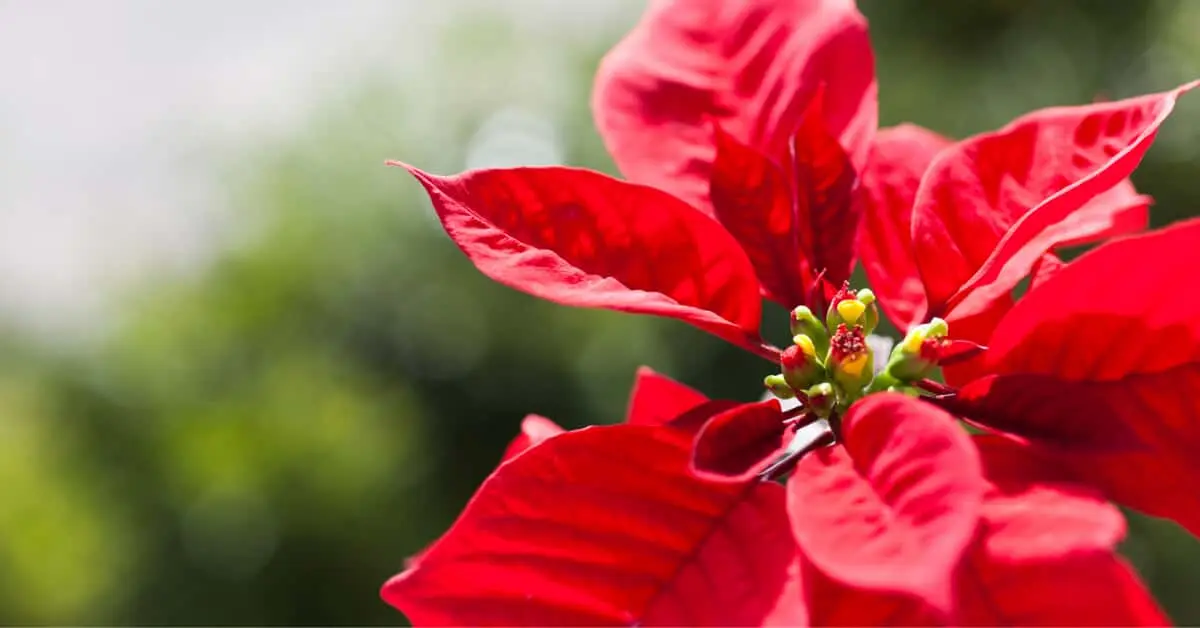Poinsettias are a common plant used in Christmas decor, but have you ever wondered why? Our landscape and plant pros take a look at the history of this fiery flora.
Origins of the Poinsettia
The poinsettia is native to Central America and typically grows from Mexico to Guatemala. The Aztecs were the first to cultivate poinsettias and used them for red dye and as a medicine for fevers.
Records of the plant’s introduction to the United States are somewhat spotty, but we do know that the poinsettia was first brought to the country by a US diplomat. Joel Roberts Poinsett sent a few plants back to his greenhouse in South Carolina in 1820—the rest, as they say, is history.
When Did The Poinsettia Become Associated With Christmas?
The plant is believed to have been first introduced as a Christmas staple in 16th-century Mexico, following the legend of a poor girl who seeks a gift to celebrate Jesus’ birthday. In the legend, an angel inspires the young girl to pick some weeds from the side of the road and put them at the church altar. When she does so, bright red blossoms sprout from the weeds—said to symbolize the blood sacrifice from Jesus’ crucifixion.
In the 17th century, Franciscan friars in Mexico began using the plant in their Christmas celebrations.
Fun Facts About Poinsettias
- Poinsettias aren’t flowers: They’re actually considered small shrubs or trees as their bright-colored bracts aren’t petals—they’re actually leaves!
- Poinsettias aren’t poisonous: This misconception stems from an urban legend from 1919 about a young child dying after eating a leaf from the plant. Contact with the plant can cause minor allergic reactions such as itchiness, swelling, and redness. Ingesting the leaves may cause some nausea or diarrhea, but these reports aren’t terribly common.




Comments (0)
Thanks for your comment!
Thanks for your feedback! Your comments have been successfully submitted! Please note, all comments require admin approval prior to display.
Error submitting comment!
There is a problem with your comment, please see below and try again.